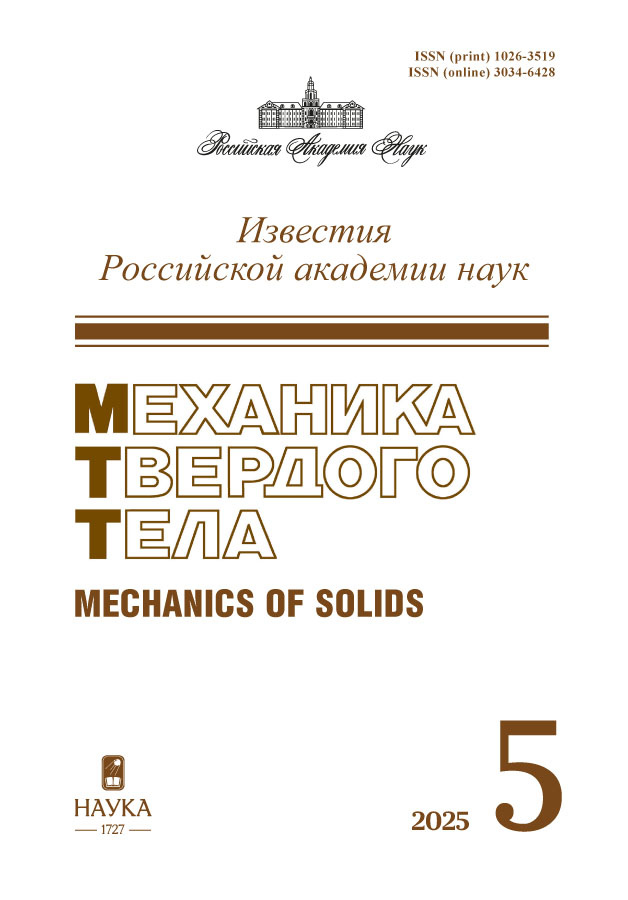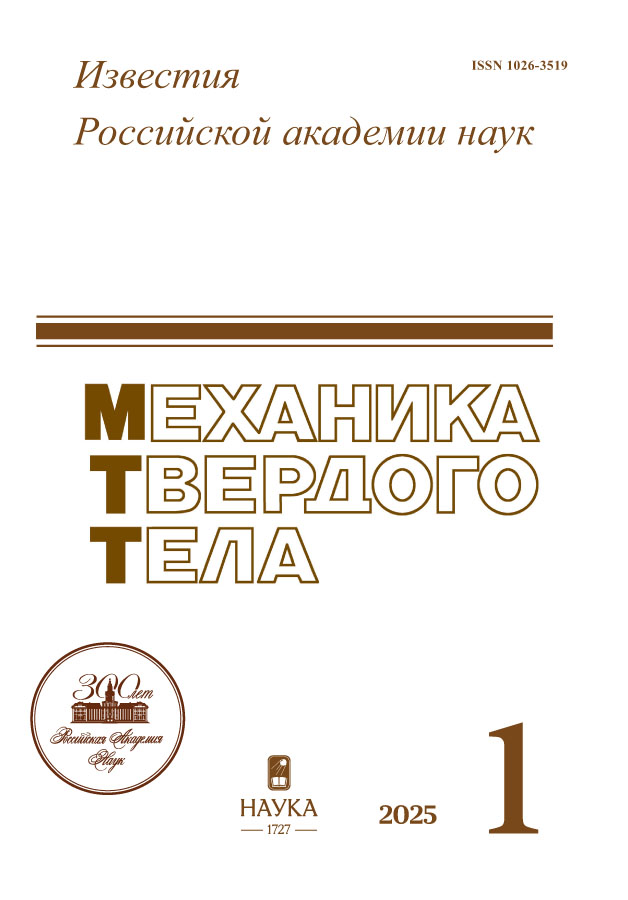Исследование сопротивления пластической деформации и жаростойкости монокристаллов сплава Co-Al-W-Ta полученных методом направленной кристаллизации с плоским фронтом
- Авторы: Епишин А.И.1, Петрушин Н.В.2, Светлов И.Л.2, Елютин Е.С.2, Лисовенко Д.С.3
-
Учреждения:
- Институт структурной макрокинетики и проблем материаловедения им. А.Г. Мержанова РАН
- Всероссийский научно-исследовательский институт авиационных материалов Национального исследовательского центра Курчатовский институт
- Институт проблем механики им. А.Ю. Ишлинского РАН
- Выпуск: № 1 (2025)
- Страницы: 249-258
- Раздел: Статьи
- URL: https://ter-arkhiv.ru/1026-3519/article/view/680998
- DOI: https://doi.org/10.31857/S1026351925010142
- EDN: https://elibrary.ru/szlsmy
- ID: 680998
Цитировать
Полный текст
Аннотация
Методом направленной кристаллизации с плоским фронтом были выращены монокристаллы кобальтового сплава Co8.4Al9.4W1.9T, ат. % с осевой макросегрегацией вольфрама и алюминия (градиентные отливки). Из полученных монокристаллов на разных высотах отливки были вырезаны мини-образцы разного химического состава для испытаний на сжатие и жаростойкость. В результате испытаний, проведенных при 900 °С, было установлено, что вольфрам повышает предел текучести сплава, тогда как алюминий улучшает его сопротивление окислению. Показано, что метод направленной кристаллизации с плоским фронтом может эффективно применятся для оптимизации физико-механических характеристик многокомпонентных сплавов металлов.
Полный текст
Об авторах
А. И. Епишин
Институт структурной макрокинетики и проблем материаловедения им. А.Г. Мержанова РАН
Автор, ответственный за переписку.
Email: a.epishin2021@gmail.com
Россия, Черноголовка, Московская область
Н. В. Петрушин
Всероссийский научно-исследовательский институт авиационных материалов Национального исследовательского центра Курчатовский институт
Email: a.epishin2021@gmail.com
Россия, Москва
И. Л. Светлов
Всероссийский научно-исследовательский институт авиационных материалов Национального исследовательского центра Курчатовский институт
Email: a.epishin2021@gmail.com
Россия, Москва
Е. С. Елютин
Всероссийский научно-исследовательский институт авиационных материалов Национального исследовательского центра Курчатовский институт
Email: a.epishin2021@gmail.com
Россия, Москва
Д. С. Лисовенко
Институт проблем механики им. А.Ю. Ишлинского РАН
Email: lisovenk@ipmnet.ru
Россия, Москва
Список литературы
- Sato J., Omori T., Oikawa K. et al. Cobalt-base high-temperature alloys // Science. 2006. V. 312. № 5770. P. 90–91. https://doi.org/10.1126/science.1121738
- Pollock T.M., Dibbern J., Tsunekane M. et al. New Co-based γ-γ’ high-temperature alloys // JOM. 2010. V. 62. № 1. P. 58–63. https://doi.org/10.1007/s11837-010-0013-y
- Bauer A., Neumeier S., Pyczak F. et al. Microstructure and creep strength of different γ/γ′-strengthened Co-base superalloy variants // Scripta Mater. 2010. V. 63. № 12. P. 1197–1200. https://doi.org/10.1016/j.scriptamat.2010.08.036
- Meher S., Yan H.-Y., Nag S. et al. Solute partitioning and site preference in γ/γ′ cobalt-base alloys // Scripta Mater. 2012. V. 67. № 10. P. 850–853. https://doi.org/10.1016/j.scriptamat.2012.08.006
- Koßmann J., Zenk C.H., Lopez-Galilea I. et al. Microsegregation and precipitates of an as-cast Co-based superalloy—microstructural characterization and phase stability modelling // J. Mater. Sci. 2015. V. 50. P. 6329–6338. https://doi.org/10.1007/s10853-015-9177-8
- Petrushin N., Hvatzkiy K., Gerasimov V. et al. A single-crystal Co-base superalloy strengthened by γ′ precipitates: structure and mechanical properties // Adv. Eng. Mater. 2015. V. 17. № 6. P. 755−760. https://doi.org/10.1002/adem.201500088
- Епишин А.И., Петрушин Н.В., Линк Т. и др. Исследование термической стабильности структуры кобальтового жаропрочного сплава, упрочненного интерметаллидными выделениями γ′-фазы // ДиРМ. 2015. № 3. С. 17–22.
- Saal J.E., Wolverton C. Energetics of antiphase boundaries in γ′ Co3(Al,W)-based superalloys // Acta Mater. 2016. V. 103. P. 57–62. https://doi.org/10.1016/j.actamat.2015.10.007
- Midtlyng J., Epishin A.I., Petrushin N.V. et al. Creep behavior of a γ′-strengthened Co-base alloy with zero γ/γ′-lattice misfit at 800 °C, 196 MPa // J. Mater. Res. 2017. V. 32. № 24. P. 4466−4474. https://doi.org/10.1557/jmr.2017.424
- Epishin A., Petrushin N., Nolze G. et al. Investigation of the γ′-strengthened quaternary Co-based alloys Co–Al–W–Ta // Metall. Mater. Trans. A. 2018. V. 49. P. 4042–4057. https://doi.org/10.1007/s11661-018-4756-3
- Tomaszewska A., Oleksiak B. Microstructural characteristics of new type γ-γ’ Co–9Al–9W cobalt-based superalloys in as-cast state // Metalurgija. 2018. V. 57. № 1–2. P. 91–94. https://hrcak.srce.hr/file/278975
- Epishin A., Chyrkin A., Nolze G. et. al. Interdiffusion in the face-centered cubic phase of the Co-Al-W-Ta system between 1090 and 1240 °C // JPED. 2018. V. 39. P. 176–185. https://doi.org/10.1007/s11669-018-0620-9
- Вигдорович В.Н., Вольпян А.Е., Курдюмов Г.М. Направленная кристаллизация и физико-химический анализ. М.: Химия, 1976. 200 с.
- Сидоров В.В., Каблов Д.Е., Ригин В.Е. Металлургия литейных жаропрочных сплавов: технология и оборудование. М.: ВИАМ, 2016. 368 с.
- Mishima Y., Ochiai S., Hamao N. et. al. Solid solution hardening of Nickel – role of transition metal and B-subgroup solutes // Trans. Jpn. Inst. Met. 1986. V. 27. № 9. 656–664. https://doi.org/10.2320/matertrans1960.27.656
- Авиационные материалы: справочник в 13 т. Т. 3. Литейные жаропрочные и интерметаллидные сплавы на никелевой основе. 7-е изд., перераб. и доп. М.: НИЦ “Курчатовский институт”–ВИАМ, 2022. 192 с.
- Никитин В.И. Коррозия и защита лопаток газовых турбин. М.: Машиностроение, 1987. 272 с.
Дополнительные файлы














